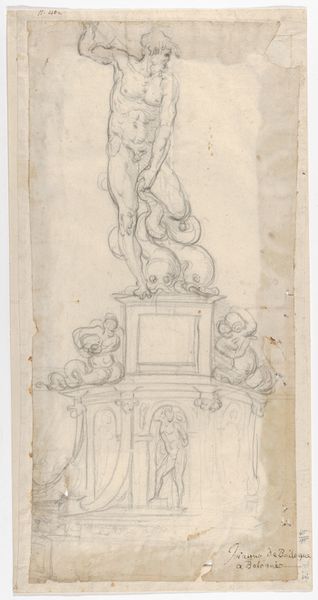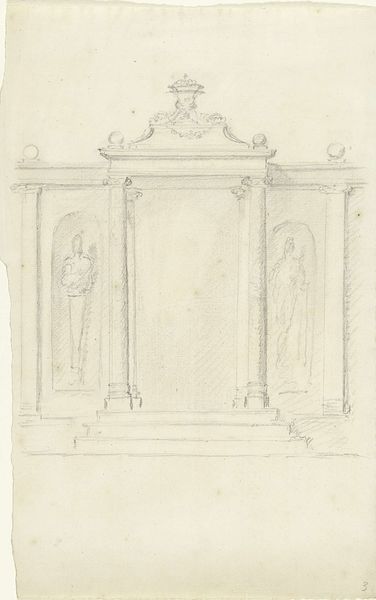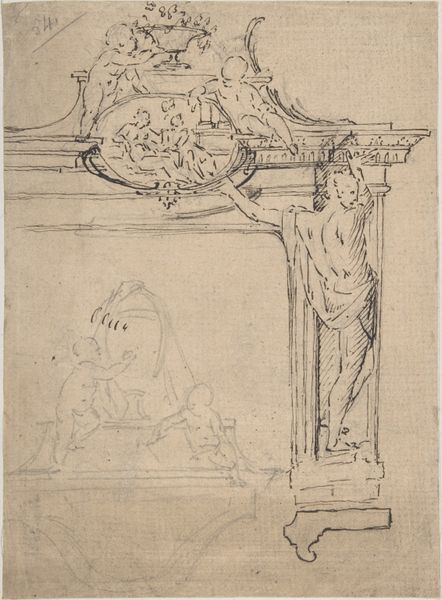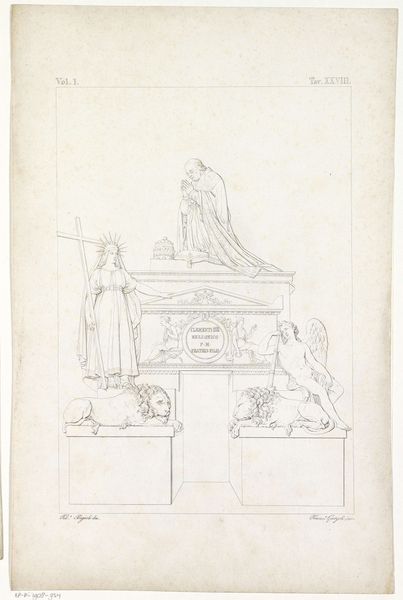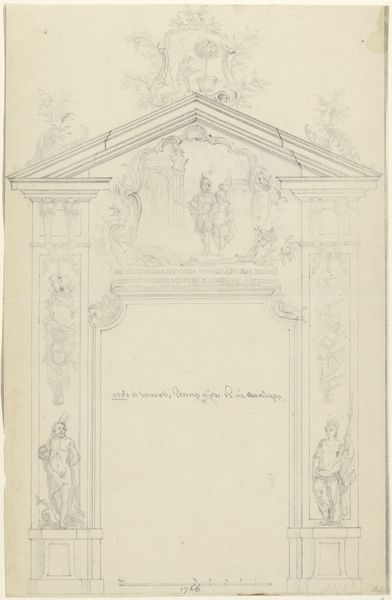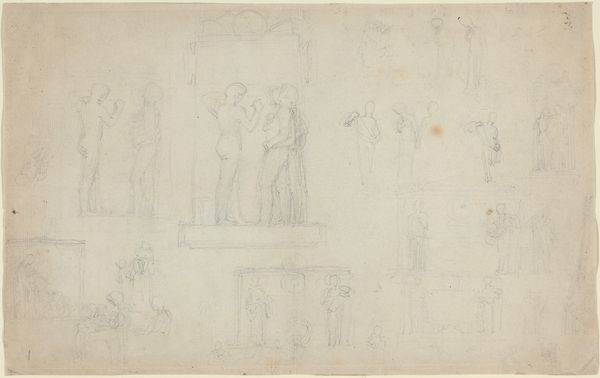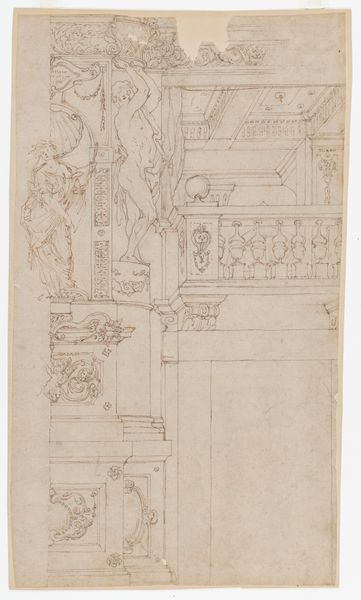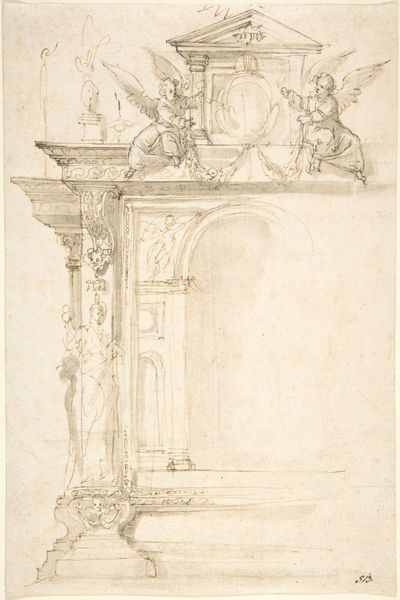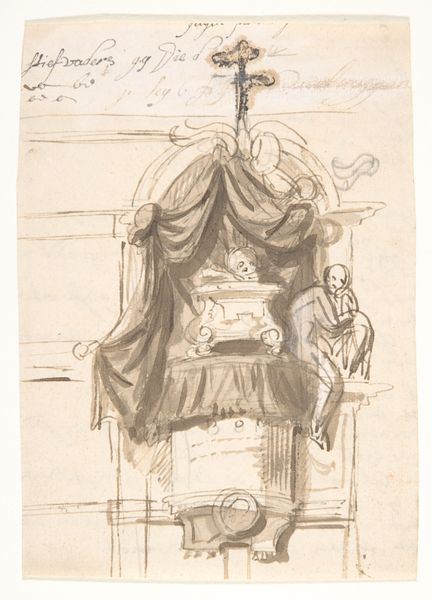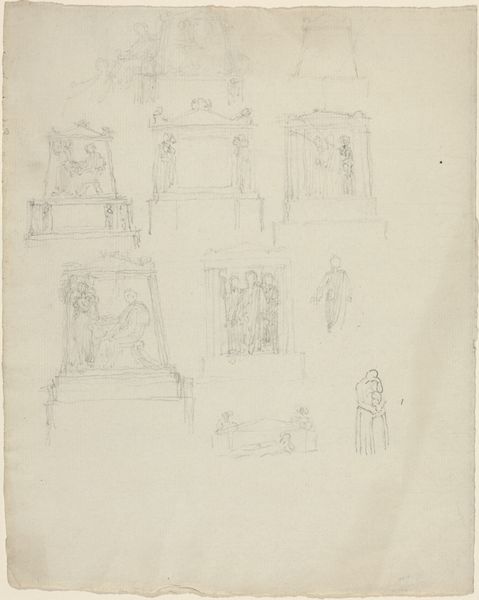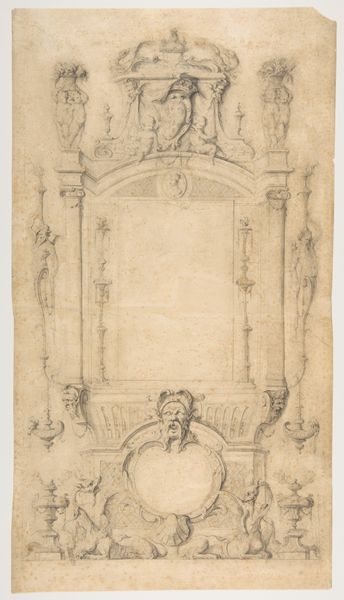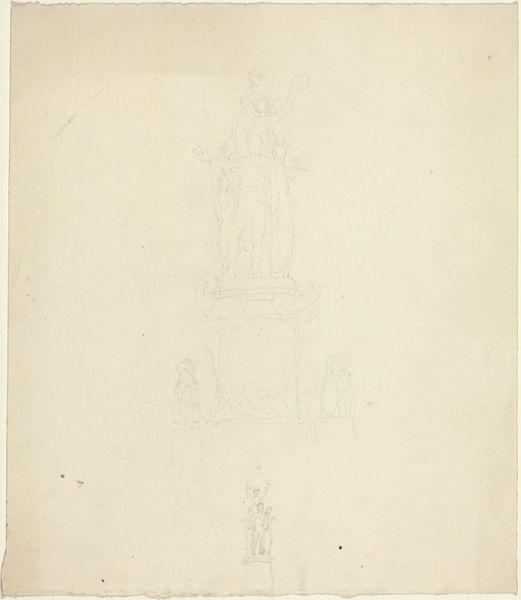
drawing, pencil
#
drawing
#
neoclacissism
#
pencil
#
academic-art
Dimensions: overall: 11.8 x 7 cm (4 5/8 x 2 3/4 in.)
Copyright: National Gallery of Art: CC0 1.0
Curator: Here we have John Flaxman's "Design for the Tomb of Dr. Joseph Warton," a pencil drawing dating back to around 1804. What strikes you first about this work? Editor: It feels ethereal, almost ghostly. The delicate pencil strokes give it a sense of impermanence, like a memory fading at the edges. It also seems rather severe and coldly formal to the touch; what context can you share to illuminate our way, perhaps? Curator: Well, given Flaxman’s association with Neoclassicism, the emphasis on linear contours and simplified forms is characteristic. We see this academic style rendered through very clear composition, almost sparse really, focusing on essential structure without ornamentation beyond minimal embellishments in the pediment. Editor: True, I get that austere vibe. But there's a tenderness, too, in the way those figures are positioned – like a gentle acknowledgement between them or an unseen figure present above, watching. Do we know who is represented, for example? I am seeing something of the presence of both living and not living within it. Curator: One could propose that. Unfortunately, Flaxman intended the monument, quite literally, for Dr. Joseph Warton, a prominent literary critic and educator. It is important to remember it is intended to honor and mark someone, which lends an undeniably melancholic tone, I agree. One can see a faint allegorical personification seated, presumably in reflective intellectual pursuit before a female figure to his right. Editor: Yes, the intellectual rigor seems so appropriate for remembering an academic like Warton. Though it appears to only be an early design sketch, is it still impressive that he so expertly communicates profound solemnity with simple strokes of genius and care? I like the simplicity and softness and wonder how a finished form would further deepen the affectations communicated here. Curator: Agreed. There’s a purity in this preliminary rendering that captivates. Flaxman harnesses restraint, offering a quiet contemplation of mortality and remembrance with formal qualities characteristic of academic draftsmanship. Editor: Exactly. What feels like emptiness is just another face for powerful suggestion, making every detail felt. The monument achieves balance between sorrowful solemnity while also gesturing towards what is hoped to have been. A well earned salute.
Comments
No comments
Be the first to comment and join the conversation on the ultimate creative platform.
